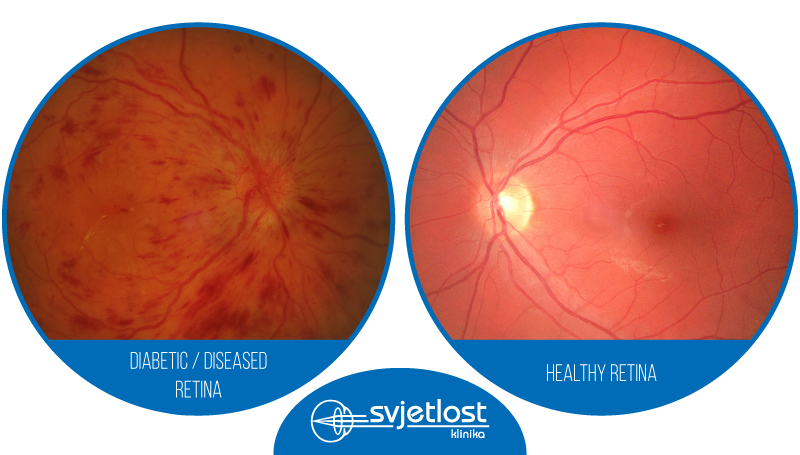When you visit an ophthalmologist, and you are over 40, you should be asked about the occurrence of diabetes and other chronic diseases in the family, about your physical activity or habits.
World Diabetes Day was celebrated on 14 November and emphasis placed on its great harm to health, as well as on the fact that diabetes, especially in developed countries and in Croatia, is on the rise. Currently, more than 300,000 people in the Republic of Croatia are registered as suffering from diabetes. One of the common complications of prolonged prediabetes / diabetes is visual impairment. In the advanced stage of the disease it is one of the leading causes of blindness. The increased prevalence and earlier occurrence of diabetes in children and adolescents is also troubling.
After all, diabetics are more prone to infections and more susceptible to various complications, as is the case if they get Covid infection.
Many believe and report that their diabetes was discovered on a certain day and it was that day they were diagnosed with just as they would “get” pneumonia or appendicitis. They find it very difficult to accept the fact that they have undetected diabetes or even more often prediabetes.
Prediabetes is a condition of metabolic disorder with occasionally elevated blood sugar values that begin to damage the body, especially blood vessels, and which can last for years before the discovery of diabetes. Risk factors include increased body weight, accumulation of fat in the waist, decreased physical activity, "the so-called unhealthy lifestyle and diet ”, high blood pressure, and especially the occurrence of diabetes in the family. The frequency is higher for those above 45 years of age.
Common signs are:
After all, diabetics are more prone to infections and more susceptible to various complications, as is the case if they get Covid infection.
Many believe and report that their diabetes was discovered on a certain day and it was that day they were diagnosed with just as they would “get” pneumonia or appendicitis. They find it very difficult to accept the fact that they have undetected diabetes or even more often prediabetes.
Prediabetes is a condition of metabolic disorder with occasionally elevated blood sugar values that begin to damage the body, especially blood vessels, and which can last for years before the discovery of diabetes. Risk factors include increased body weight, accumulation of fat in the waist, decreased physical activity, "the so-called unhealthy lifestyle and diet ”, high blood pressure, and especially the occurrence of diabetes in the family. The frequency is higher for those above 45 years of age.
Common signs are:
- Fatigue
- Increased thirst and hunger
- More frequent urination
- Blurred vision.
Common symptoms are changes in skin color and pigmentation in the lower leg and foot as well as erectile dysfunction (sexual impotence) in men.
When you visit an ophthalmologist, and you are over 40, you should be asked about the occurrence of diabetes and other chronic diseases in the family, about your physical activity or habits. Don't be surprised or offended if you are overweight or have a large belly and your ophthalmologist warns you and asks questions about the signs and symptoms of prediabetes.
Therefore, take care of your health, and if you recognize yourself in this text, check your morning blood sugar (GUK) and also the obligatory Hba1c blood test, which will show a quarterly movement of blood sugar values, or "true truth". Also, be sure to visit an ophthalmologist and report your observations and concerns.
Remember that preventive and periodic ophthalmological examinations can save your eyesight and will have a beneficial effect on your health in general if you have a condition of prediabetes or diabetes.



